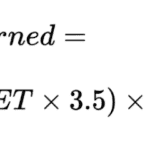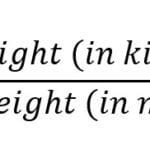Find your Life Expectancy – AI death calculator
Life expectancy is a fundamental measure of public health, reflecting the average number of years a person is expected to live based on current mortality rates. While genetics play a role in determining lifespan, lifestyle choices, environmental factors, and advances in healthcare significantly impact life expectancy. With the Life Expectancy Calculator, individuals can explore their potential lifespan and gain insights into the factors that may affect their longevity.
Life Expectancy Calculator
What is Life Expectancy?
Life expectancy is the average number of years a person can expect to live based on current mortality rates. It varies across different regions and populations due to factors such as healthcare access, economic development, and lifestyle choices.
Factors That Influence Life Expectancy
Life expectancy is affected by a combination of biological, social, and environmental factors.
1. Genetics & Family History
- Some people inherit long-living genes that reduce their risk of age-related diseases.
- A family history of heart disease, cancer, or diabetes can lower life expectancy.
2. Diet & Nutrition
- A balanced diet rich in fruits, vegetables, and healthy fats supports longevity.
- High consumption of processed foods, sugar, and red meat increases disease risks.
3. Physical Activity & Fitness
- Regular exercise reduces the risk of heart disease, obesity, and mental decline.
- Sedentary lifestyles shorten lifespan by increasing risks of stroke, diabetes, and hypertension.
4. Healthcare Access & Quality
- Countries with better healthcare systems have higher life expectancy.
- Vaccinations, early disease detection, and medical advancements improve survival rates.
5. Smoking, Alcohol & Drug Use
- Smoking reduces life expectancy by 10 years on average due to lung disease and cancer risks.
- Excessive alcohol consumption increases liver disease and heart failure risks.
6. Stress & Mental Health
- Chronic stress shortens lifespan by increasing heart disease risk.
- People with strong social connections and low stress levels tend to live longer.
7. Environmental & Economic Factors
- Pollution, unsafe water, and exposure to toxins reduce life expectancy.
- People in wealthier nations often live longer due to better living conditions.

live Longer! Stay healthier by eating better
Its not a rocket science to understand that food is the fuel for your body and the better you eat is how longer you will live, We have a FREE app for you not just for macro-based meal plans, nutritional recipes but we have sleep tracker, workout trackers, heart rate monitoring all in one place. Try it now
Global Life Expectancy Trends – Life Expectancy by Country
Life expectancy has been steadily increasing globally due to advancements in medicine, improved living conditions, and public health initiatives . However, disparities remain between countries and regions, with developed nations generally experiencing higher life expectancies than developing ones. Some countries have higher life expectancy due to diet, healthcare, and lifestyle. Below are the latest rankings for the top and bottom five countries in life expectancy.
Top 5 Countries With the Highest Life Expectancy
| Country | Average Life Expectancy |
|---|---|
| Japan | 84.7 years |
| Switzerland | 84.3 years |
| Singapore | 84.1 years |
| Spain | 83.6 years |
| Italy | 83.4 years |
Bottom 5 Countries With the Lowest Life Expectancy
| Country | Average Life Expectancy |
|---|---|
| Central African Republic | 54.0 years |
| Chad | 54.3 years |
| Nigeria | 55.2 years |
| Lesotho | 56.2 years |
| Somalia | 56.7 years |
📌 Why do some countries live longer?
- Japan & Mediterranean countries have diets rich in healthy fats, fish, and antioxidants.
- Developed nations offer high-quality healthcare and social support systems.
- Poorer countries face challenges like malnutrition, lack of clean water, and infectious diseases.

The Science of Longevity: Why Do Some People Live Over 100 Years?
Centenarians (people who live to 100+ years) have fascinated researchers for decades. Scientists study Blue Zones, regions with exceptionally high numbers of long-living people.
What Are the Blue Zones?
These are areas with the highest concentration of centenarians in the world:
✔ Okinawa, Japan – Famous for plant-based diets and strong social bonds.
✔ Sardinia, Italy – Has the highest number of male centenarians.
✔ Nicoya, Costa Rica – Diet includes beans, corn, and plenty of physical activity.
✔ Ikaria, Greece – High Mediterranean diet, frequent napping, and low stress.
✔ Loma Linda, California (USA) – Home to a community of Seventh-day Adventists with a vegetarian diet.
What Do Blue Zone Residents Have in Common?
✅ Healthy Diet – Mostly plant-based, high in whole foods and healthy fats.
✅ Physical Activity – Daily walking, farming, or manual labor.
✅ Strong Social Networks – Close family and community support.
✅ Stress Reduction – Meditation, faith, and a relaxed lifestyle.
✅ Purpose in Life – “Ikigai” (reason for living) plays a key role.
COMPARISON
How long do people live Across Different Countries (2000–2023)
Life expectancy varies significantly across countries due to differences in healthcare, lifestyle, economic development, and social conditions. While developed nations have consistently high life expectancy due to advanced healthcare systems, developing nations like India have made substantial progress in improving life expectancy over the last two decades.
Below, we explore the life expectancy trends in five major countries: the USA, UK, Germany, France, and India, backed by data and graphical representations.
Life Expectancy in the USA
The United States has seen moderate growth in life expectancy, rising from 76.8 years in 2000 to 79.1 years in 2023. While medical advancements have improved survival rates, obesity, heart disease, and high healthcare costs remain major challenges.
📌 Key Factors Affecting Life Expectancy in the USA:
✔ Healthcare Inequality: Unlike Europe, the US lacks universal healthcare, leading to disparities in life expectancy.
✔ Obesity & Chronic Diseases: High rates of diabetes, heart disease, and obesity impact longevity.
✔ Medical Advances & Technology: Improved cancer treatments and early disease detection have helped maintain life expectancy levels.
🚀 Future Outlook: Advances in AI-driven healthcare, personalized medicine, and genetic research may improve life expectancy further.
Life Expectancy in the UK
The United Kingdom has seen steady improvements in life expectancy, rising from 77.4 years in 2000 to 81.3 years in 2023. The UK’s National Health Service (NHS) has played a crucial role in ensuring accessible and affordable healthcare for all citizens.
📌 Key Factors Affecting Life Expectancy in the UK:
✔ Universal Healthcare: The NHS provides free healthcare, ensuring early disease detection and treatment.
✔ Declining Smoking Rates: Public health campaigns have reduced smoking-related deaths.
✔ Healthy Lifestyle & Diet Awareness: Increased awareness of nutrition, exercise, and wellness has positively influenced longevity.
🚀 Future Outlook: The UK’s focus on preventive healthcare and improving elderly care services could further boost life expectancy in coming years.
Life Expectancy in Germany
Germany consistently ranks among the top countries for healthcare and has a high life expectancy, increasing from 78.1 years in 2000 to 81.4 years in 2023. Germany’s universal healthcare system, economic stability, and high living standards contribute to its longevity.
📌 Key Factors Affecting Life Expectancy in Germany:
✔ High-Quality Healthcare System: Germany offers mandatory health insurance for all citizens, ensuring access to top-tier medical care.
✔ Balanced Diet & Active Lifestyle: Germans typically follow a diet rich in whole foods and lean proteins, contributing to better overall health.
✔ Strong Elderly Support & Social Care: Senior citizens benefit from state-funded nursing homes, pensions, and social security programs.
🚀 Future Outlook: Germany’s investment in elderly care, healthcare technology, and AI in medicine will likely enhance life expectancy further.
Life Expectancy in France
France has one of the highest life expectancies in the world, increasing from 79.2 years in 2000 to 82.8 years in 2023. This is attributed to a strong healthcare system, a Mediterranean-influenced diet, and an emphasis on preventive medicine.
📌 Key Factors Affecting Life Expectancy in France:
✔ Universal Healthcare: France’s highly efficient public health system ensures citizens receive quality medical care at low costs.
✔ Healthy Diet & Wine Culture: The French diet, rich in fresh vegetables, olive oil, and moderate red wine consumption, is associated with lower heart disease rates.
✔ Active Lifestyle & Work-Life Balance: French citizens enjoy more vacation time, relaxed work culture, and strong community bonds, reducing stress levels.
🚀 Future Outlook: Advances in anti-aging research, genetic medicine, and AI-driven health monitoring may further improve longevity in France.
Life Expectancy in India
India has seen one of the most dramatic increases in life expectancy, rising from 63.5 years in 2000 to 70.9 years in 2023. Improved healthcare access, vaccination programs, and economic growth have played major roles in extending life expectancy.
📌 Key Factors Affecting Life Expectancy in India:
✔ Advancements in Healthcare: Government initiatives like Ayushman Bharat have improved access to affordable healthcare.
✔ Reduction in Infant Mortality: Better maternal care, vaccination programs, and nutrition awareness have lowered child mortality rates.
✔ Dietary & Lifestyle Changes: While traditional plant-based diets are beneficial, rising urbanization and processed food consumption present new health risks.
🚀 Future Outlook: With continued investments in healthcare, sanitation, and disease prevention, India’s life expectancy could reach 75+ years within the next decade.

Common Questions about Life Expectancy –
INTRODUCTION
The Future of Life Expectancy: Can Humans Live Beyond 120 Years?
KnWith advancements in genetics, biotechnology, and regenerative medicine, scientists are now exploring ways to extend human life well beyond the current natural limit of around 120 years. While some experts believe that aging is inevitable, others argue that medical and technological breakthroughs could dramatically increase both lifespan and healthspan—the number of years we live free from disease.
Potential Longevity Innovations
🧬 Gene Editing (CRISPR): Could eliminate age-related diseases.
🦠 Senolytics: Drugs that remove aging cells and promote tissue regeneration.
🩺 Artificial Organs & 3D Bioprinting: May extend lifespan by replacing failing body parts.
💊 Anti-Aging Therapies: Metformin and Rapamycin are being studied for longevity effects.
📌 While current human lifespan peaks at 122 years, future technologies may redefine how long humans can live.
INTRODUCTION
Final Thoughts
A combination of genetics, lifestyle, environment, and medical advancements shapes life expectancy. While we can’t control our genes, we can make lifestyle changes to improve our chances of living a longer, healthier life.
Key Takeaways for a Longer Life:
✔ Eat a healthy diet (rich in whole foods and healthy fats).
✔ Stay physically active and avoid prolonged sitting.
✔ Reduce stress and prioritize mental health.
✔ Maintain strong social connections.
✔ Quit smoking and limit alcohol.
✔ Focus on preventive healthcare and medical checkups.
Longevity is not just about living longer—it’s about living better!





